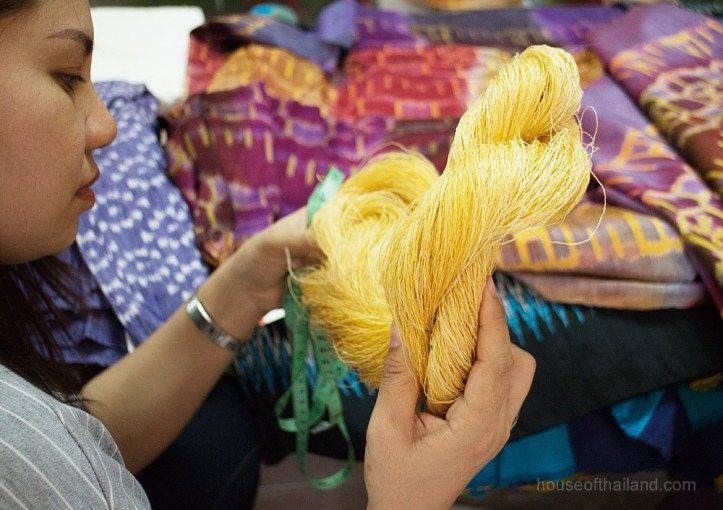Thai traditional trades staying alive in ‘new normal’

Thai silk and craft-related trade is staying alive in the ‘new normal’ era thanks to the Support Foundation created and backed by Her Majesty Queen Sirikit. The Foundation for the Promotion of Supplementary Occupations and Related Techniques under the Royal Patronage of Her Majesty the Queen, was initiated in 1976 with the hopes of introducing original handicrafts to the younger generations. Today, it boasts an international, billion baht industry that helps support the Thai economy through setting stylish trends both locally and abroad.
In the 1970s, Queen Sirikit and His Majesty, the late King Bhumibol Adulyadej The Great worked to improve the quality of life of the Thai people. They set up projects that aimed to generate sustainable income for those in rural areas helping to aid the living conditions of those with low socioeconomic status. Upon visiting such areas as Isaan, Her Majesty lauded the unique identities of these people and lifestyles, which were reflected in their handmade crafts and textiles.
Her Majesty vowed to preserve the unique handicrafts and encouraged rural weavers to continue to make these distinctive textiles while introducing different colours to help them appeal to modern tastes. From there, she incorporated these products into the Support Foundation to help promote such traditional ways of earning an income. The queen even had her own wardrobe redesigned to showcase the Thai villagers’ fabrics, wearing their creations in the style of Thai silks. The move proved prosperous as such trends caught on both on the home front and worldwide.
Now, world renowned designers and embroiderers such as Pierre Balmain and Francois Lesage have used the designs in their own creations, paving the way for the original designers to step up their standards of living. The delicate designs are showcased at the Queen Sirikit Museum of Textiles and include such handicrafts as Northeastern silk ikat, or Matmii in Thai, as well as Chok and Phrae Waa silk brocade shoulder cloths. Pha Yok from southern Thailand is also on display as their golden brocades are delightful to the eyes.
Such sustainable ways of living that have been supported by the foundation include seeing the weavers growing their own mulberry trees to raise silkworms from start to finish in order to weave the fabric made for the unique clothing.
Nadhawan Tanyongmas, deputy director of the museum, says that the museum is considered as part of the Support Foundation. Its objective is to raise awareness, preserve and become a specialized learning centre about the Queen Mother’s dedication, the history and values of Thai textiles and handicrafts.
“We apply advanced technology of an international standard in the conservation lab to restore and preserve all type of fabrics, not just Thai silk, but also cotton and hilltribe textiles. Our main challenge is drawing the public to visit the museum as our culture is unlike that in Western countries. We organize activities every month to offer knowledge in more interactive ways.”
“Moreover, we have created a visual museum on the Google Art and Culture platform so that we can reach young generation viewers through various channels.”
The Support Foundation is also taking the lead and working closely with suppliers and leading designers, to promote and commercialize the products globally. As the Thai economy has suffered due to the Covid-19 pandemic, it is no doubt one more way of helping those in rural areas create a sustainable living.
SOURCE: Thai PBS World
Catch up with the latest daily “Thailand News Today” here on The Thaiger.
Latest Thailand News
Follow The Thaiger on Google News:


























